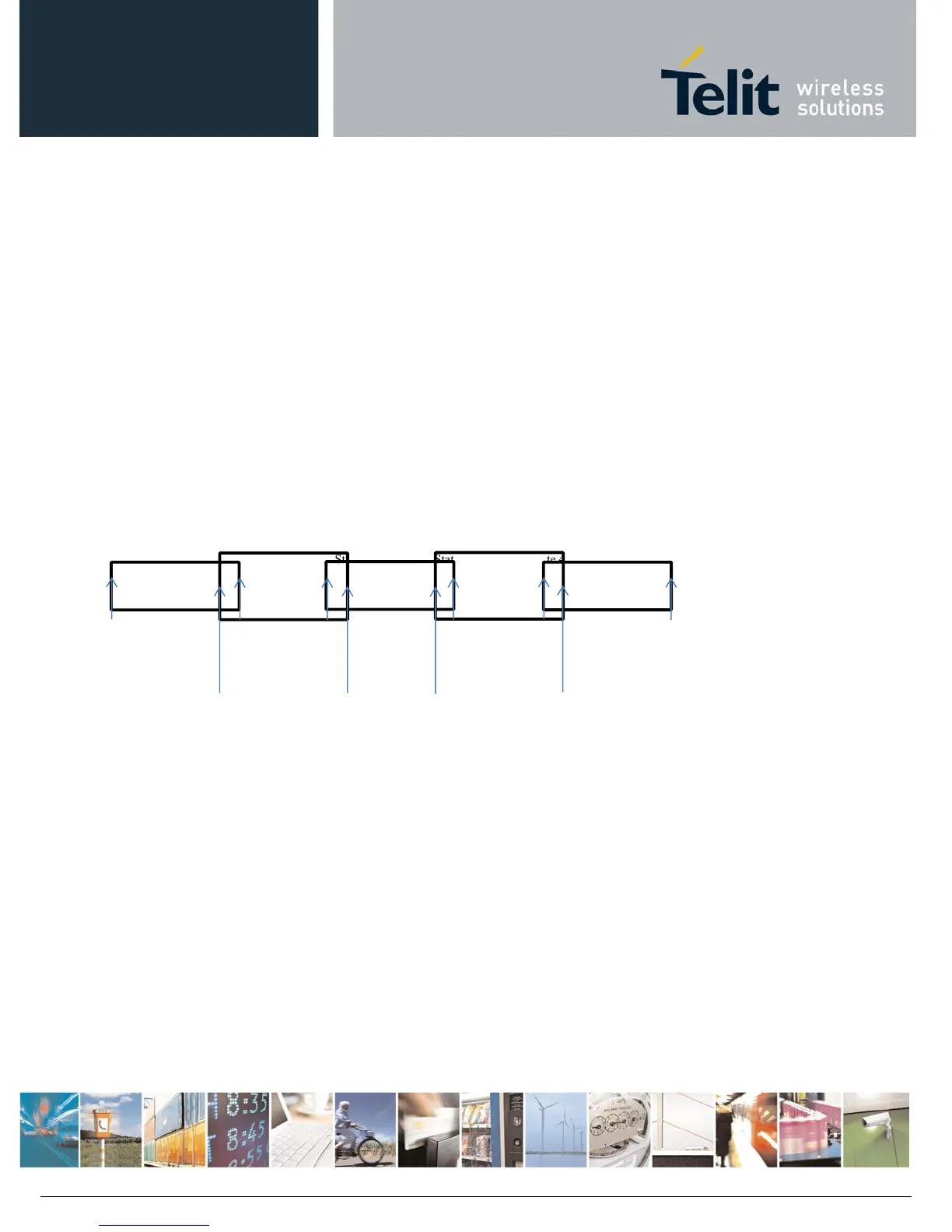AT Commands Reference Guide
80529ST10815A Rev.2– 2017-09-14
ReproductionforbiddenwithoutTelitCommunicationsS.p.A.writtenauthorization‐AllRightsReserved page125of233
- "thresholds_clr" – lower temperature boundary of the state. Values are in °C.
- "
actions" – indicator that indicates if an action should be taken or not in the "current state".
Values are: "
none"/"mitigate".
"
action_info" – thermal mitigation action type that should be taken care if "actions" field is "mitigate".
Values are:
0 - No mitigation action is required.
1 - Mitigation action - data throttling (reducing uplink baud rate).
2 - Mitigation action - TX backoff (reducing MTPL - Max Tx Power Limit).
3 -
Emergency Calls Only.
4 - RF OFF. RX and TX circuits automatically disabled (using +CFUN=4).
5- Automatic shutdown. Module is powered off.
It is
prohibited for user to set ‘action info’ equal to ‘5’in ‘operate normal zone’. This comes in order to
prevent setting ‘Automatic shutdown’ by mistake to the normal operating temperature range.
“+CME ERROR: operation not supported” error will be received as a response.
Here is the graph that illustrates the temperature states and their limits:
State 0 State 1 State 2 State 3 State 4
When temperature exceeds the "current state" "threshold", the thermal mitigation algorithm searches the next
state when this temperature is lower than "threshold". After it finds it, the "current state" is updated to that
"state" and then it checks whether "action" is "mitigate". If yes, then it activates the mitigation according to the
"action info" of the "current state".
When temperature decreases below "threshold_clr" then it does the same algorithm as above, but in the
opposite direction. It searches the next state when this temperature is greater than "threshold_clr ", updates the
"current state" to that state, and activates mitigation as described above.
There are 2 rules in that states definition should follow:
1. Overlap between 2 adjacent states of at least 2 deg, i.e. ( "thre state(x)" – "thre_clr state(x+1)" ) >= 2
2. Every state shall have "free" temperature range which has no part in any overlap range. This range
should be at least 2 deg, i.e. ( "thre_clr(x+2)" – "thre(x)" ) >= 2 .
Rule '1' comes to ensure hysteresis in the transition between two states.
Rule '2' comes to ensure a minimum range for a stable state.
State 0 is 'Extreme low zone'.
State 1 is 'Operate low zone'.
State 2 is 'Operate normal zone'.
thr_clr0
thr_clr1
thr_clr 3
thr_clr2
thr_clr 4
Thre0
Thre1
Thre2
Thre3
Thre4

